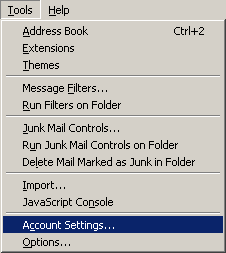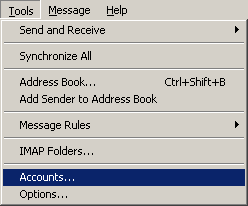4. Configuring Alternative Mail Clients¶
4.1. Client configuration¶
Important
Please note that IMAP and Pop3 access are not enabled by default. “Kopano Feature Management” to either enabled it on a per user basis (recommended) or for the wholser server.
Every client supporting IMAP4 or POP3 should be able to connect to Kopano via the Kopano IMAP & POP3 gateway.
For sending mail, clients will use SMTP. An SMTP service can be running on the same system as the Kopano Server, or it can be the SMTP service of the internet provider. Some servers need SMTP authentication. The client can store sent messages in a Sent Items folder.
Note
SMTP credentials are not necessarily the same as the Kopano credentials.
Important
Please have in mind that “/” and ”.” are illegal characters in IMAP folder names, but are generally possible in MAPI and therefore valid in Outlook und WebApp. Using these characters will lead to folders displayed with different names (for example RequestSupport instead of Request/Support) when accessed via IMAP. You should not use these characters when planing to use IMAP.
4.1.1. Mozilla Thunderbird¶
The first two steps can be skipped when opening Thunderbird for the first time. The following example is for the IMAP protocol. Setting up the POP3 protocol is similar.
Go to Tools
>Account settings....
Tools dropdown menu
Click Add Account.
Select Email account and click Next.
Fill in your name and Kopano email address and click Next.
Select IMAP and fill in the Kopano server’s hostname or IP address. Click Next.
Fill in the Kopano username for the Incoming username and the outgoing username. Click Next.
The account name can be chosen by the user itself. Click Next.
Check the data and click Finish. Now close the Account Settings window.
Open the Inbox and type in your password to receive the folder structure from the Kopano server.
Re-open the Account Settings window and select the Server Settings in the previously created account.
Set the security to the desired level (default is Never).
Select Copies & Folders in the account tree and set the correct foldernames for the IMAP server.
Finally, click OK and start using Kopano with the IMAP protocol.
Important
For optimal mail handling, it is recommended to change the location of certain folders inside of your IMAP client.
For example, the location of the Trash folder should be changed to the Kopano folder Deleted items. This can be accomplished in Thunderbird by going to “Settings” - “Server Settings”. The same applies to the Sent folder, which should be changed to the Kopano folder “Sent items” by going to “Settings” -> “Copies & Folders”.
Optionally, the settings for the folders Drafts and Junk can be changed as well.
Note
Depending on the language the store was created in, the folder names can vary.
4.1.2. Windows Mail¶
This example is based on Windows Mail. Outlook Express can be configured in a similar way.
The following example is for the IMAP protocol. Setting up the POP3 is similar.
Go to Tools
>Accounts.
Tools dropdown menu
Click Add....
Select Email Account and click Next.
Enter the Display Name and click Next.
Enter the Email Address and click Next.
Select IMAP from the dropdown menu, fill in the Kopano server’s hostname or IP address and the hostname or IP address of the outgoing mailserver.
Optional: check whether the outgoing server needs authentication and click Next.
Fill in the Kopano username in Email Username and the Kopano password. Click Next.
(Un)tick whether the user wants to download the data from the server right away and click Finish.
Highlight the new account in the folder list and click Properties in the context menu (open by a right-click on it).
Select the IMAP tab.
Check whether the Special Folders is ticked and the folders are set the same as the Kopano folders.
Finally, click OK and start using Kopano with the IMAP protocol.